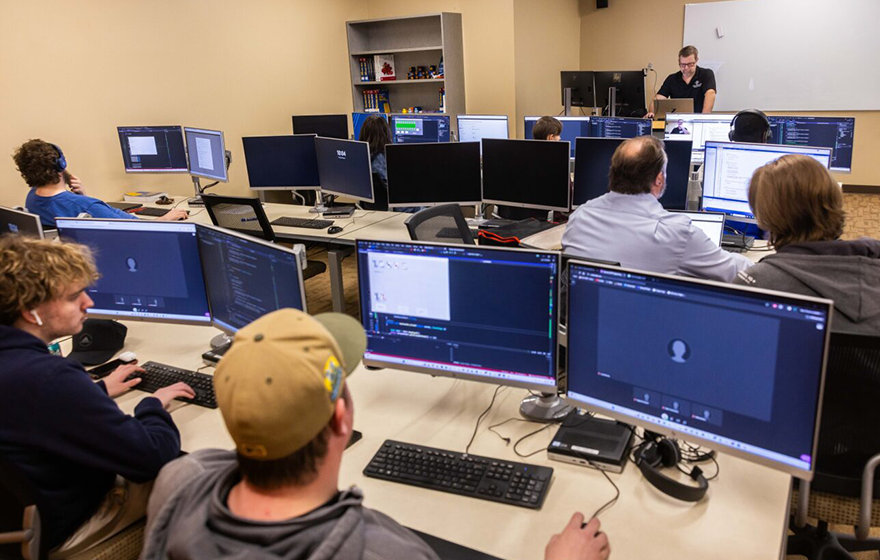Dedicated Developers vs. In-House Teams: Which Is Right for You?
The decision in between utilizing specialized designers and maintaining an internal group is a considerable one that can impact the trajectory of your jobs and overall business approach. Alternatively, internal teams contribute to a natural business culture and a nuanced understanding of lasting goals.
Understanding Devoted Developers
The growing demand for specialized skills in the technology sector has led to the appearance of committed designers as a practical remedy for several organizations. These specialists are commonly acquired on a project basis, permitting companies to utilize certain knowledge without the lasting dedication related to permanent hires. Dedicated developers are usually embedded within a client's group, offering versatility and scalability to fulfill job needs.
This design enables companies to access a global ability pool, which is especially useful in a quickly evolving technological landscape. Devoted designers can be sourced from numerous geographical locations, guaranteeing that companies can discover the appropriate skill established at affordable prices. They typically bring a riches of experience and expertise, having actually worked on varied tasks throughout different markets.
In addition, dedicated developers can concentrate exclusively on the tasks handy, improving performance and performance. They are outfitted to integrate flawlessly right into existing process, teaming up very closely with internal groups to attain task purposes. This technique not just decreases the concern of recruitment and training yet additionally permits organizations to stay active, adjusting rapidly to altering market demands and technological improvements.
Benefits of In-House Teams

Additionally, in-house groups often tend to have a deeper understanding of the firm's mission, values, and objectives. This alignment can boost staff member interaction and inspiration, as employee feel a lot more attached to their job and the organization's success. In addition, having a devoted internal team allows for much better placement of goals and strategies, as these participants are regularly concentrated on the company's top priorities.
In-house groups additionally facilitate quicker decision-making procedures, as they can respond much more quickly to difficulties and modifications. The established relationships and experience with company methods permit for streamlined workflows and reduced miscommunication. Inevitably, the mix of a natural culture, alignment with organizational objectives, and efficient communication makes in-house teams an important possession for several companies, especially those wanting to grow lasting development and innovation.
Cost Considerations
When assessing expense considerations, both devoted developers and in-house teams existing distinct economic ramifications for organizations. Involving dedicated developers generally entails a pay-per-project or per hour price design, which can be affordable for businesses with fluctuating project needs. This method permits flexibility in scaling resources up or down, ensuring that business only spend for the solutions they need.
On the other hand, internal teams involve taken care of expenses, including wages, benefits, and overhead costs such as office room and equipment. While this version supplies higher control and immediate availability of sources, it may bring about higher long-term expenditures, especially if the workload does not warrant a full time staff.
Additionally, firms ought to take into consideration the concealed costs related to employment and training of in-house staff members, which can further strain spending plans. In many cases, the moment and resources spent on taking care of an in-house team can diminish the organization's core service purposes.

Project Monitoring and Flexibility
Project monitoring and versatility are critical elements that influence the selection in between in-house groups and specialized designers. Dedicated developers generally offer a high level of adaptability, permitting companies to scale sources up or down based upon project needs. This dexterity can be particularly beneficial for businesses experiencing rising and fall workloads or those seeking to introduce quickly. Dedicated groups frequently have actually developed procedures for managing jobs successfully, leveraging details methodologies like Agile or Scrum, which help with best software developer repetitive progression and versatility.

Inevitably, the selection in between internal groups and committed designers depends upon the preferred level of versatility and the certain job management needs. Companies must review their functional dynamics, job complexity, and source accessibility to identify which choice aligns ideal with their calculated objectives.
Making the Right Selection
Selecting the best growth technique-- specialized developers or internal teams-- requires a careful evaluation of various aspects that straighten with a business's critical goals. software engineering staffing. First, take into consideration the nature of the job. Dedicated designers might be much more ideal if it demands specialized skills or a fast scale-up. Conversely, internal teams can supply better continuity and assimilation with existing employees.
Next, evaluate your budget. Committed designers frequently provide a cost-effective option for temporary tasks, while internal teams may incur higher long-term expenses because of incomes, benefits, and overhead expenses. Evaluate the degree of control and partnership wanted; internal groups commonly foster stronger communication and placement with firm culture.
In addition, take into consideration the moment framework. If instant outcomes are needed, specialized designers can be onboarded quickly, whereas constructing an in-house team takes time for recruitment and training. Finally, consider the lasting vision of your organization. If constant development is essential, purchasing an in-house group might produce better returns in time. Inevitably, the decision depends upon a comprehensive evaluation of these variables, making certain alignment with your company's operational needs and overall purposes.
Final Thought
In verdict, the choice between in-house groups and specialized developers depends upon project requirements and business objectives. Committed programmers provide adaptability and specific know-how, making them ideal for temporary campaigns. Conversely, in-house teams grow a natural society and deeper alignment with long-term goals. Cautious examination of budget plan constraints, task timelines, and wanted control degrees is necessary for identifying one of the most proper technique, making certain placement with strategic priorities and operational performance.
The decision between using devoted developers and preserving an in-house group is a substantial one that can impact the trajectory of your tasks and total service technique.Project monitoring and adaptability are vital elements that affect the option between committed programmers and in-house teams. software development staff augmentation.In comparison, in-house groups may succeed in preserving a regular job management framework due to their familiarity with the company's society and long-term objectives. Devoted developers commonly present an economical option for temporary projects, while internal teams might incur higher lasting expenditures due to incomes, benefits, and overhead expenses.In verdict, the decision in between in-house teams and committed developers hinges on project demands and business purposes